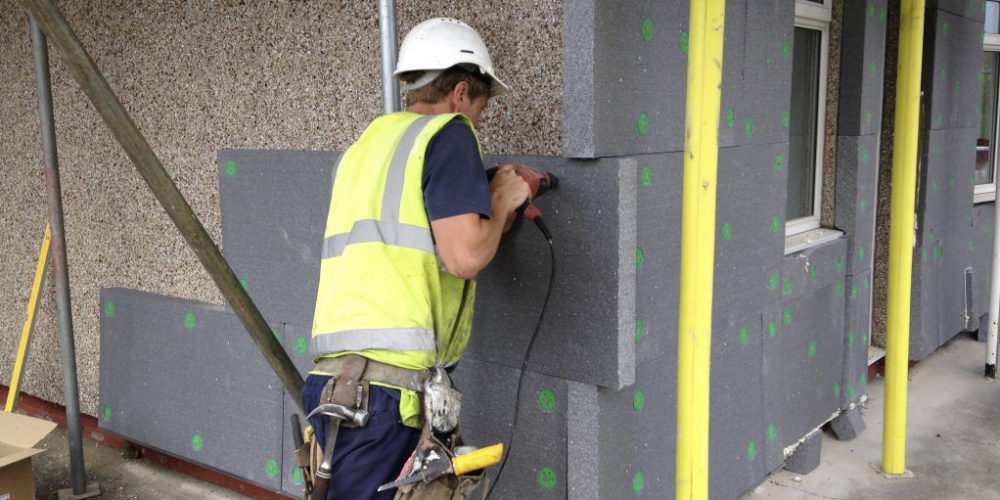External wall insulation is one of the many energy efficiency measures you can have installed, to save money on your household fuel bills, and reduce heat loss. In fact, according to the Energy Saving Trust (EST), you can save up to £660* per year off your energy bills by insulating your solid walls.
This method is a huge benefit to homes with solid walls which are unable to benefit from cavity wall insulation. Did you know? It is estimated that 7.9 million homes in the UK have solid walls and could benefit from this type of insulation.
How can you tell your home has solid walls?
Older homes are more likely to have solid walls. If your home was built pre-1920, it is likely your home has no cavity and therefore is a solid wall.
Another way to check if your home has solid walls, and therefore could benefit from external wall insulation, is by looking at the brick pattern. If your walls are solid, every other brick will probably be placed end-on rather than look the same size.
Don’t worry if you’re not sure, an experienced Assessor would be able to check during a survey.
How is external wall insulation installed?
If your home is suitable for external insulation, as identified at the survey stage, then one of the first stages would be to erect scaffolding. Scaffolding is required so that the installation team can gain access to the external walls of your property.
Enabling works would be carried out before the insulation boards are installed. Any fixtures and fittings are then removed or extended before the walls can be insulated.
External wall insulation is installed by attaching a thermal layer to the existing external walls and then finished with a render or decorative cladding to protect it from the wind and rain.
Once the external wall insulation system is fitted, any fixtures and fittings removed during the installation process, are put back in place. Scaffolding is then removed.
Benefit from 0% VAT when you install energy efficiency measures
Now is the perfect time to consider upgrading the energy efficiency of your home. Not only because energy bills are rising at an incredible rate, but you can also benefit from 0% VAT thanks to an announcement made by the government. This VAT cut will be available from 1 April 2022 until 2027. As a result, households looking to upgrade the energy efficiency of their homes will benefit from further savings with this recent incentive. This is applicable when installing insulation and renewable measures.
What are the benefits of solid wall insulation?
- Improves the thermal efficiency of your home – more comfort and warmth
- Improves the aesthetics of your home
- It reduces heat loss and lowers energy bills dramatically
- Can improve the EPC rating
- Soundproofing from outside noise
- Could increase the value of the property
- It increases the life of the wall
- Can reduce condensation on internal walls if fitted correctly
Are grants available for external wall insulation?
Funding may be available from the government’s Energy Company Obligation (ECO4) scheme. This is an obligation on energy companies to provide funding for energy-saving measures, by the government, to upgrade the energy efficiency of the country’s worst-performing housing and to provide fuel poverty support. ECO4 funding is available for households with low incomes, in receipt of qualifying benefits, and with a low property EPC rating. This is part of a wider government strategy to reduce carbon emissions, tackle fuel poverty, and help householders save money on their energy bills.
- Source: Energy Saving Trust (EST). Estimates based on insulating a detached gas-heated home. Figures are based on fuel prices as of January 2024.

